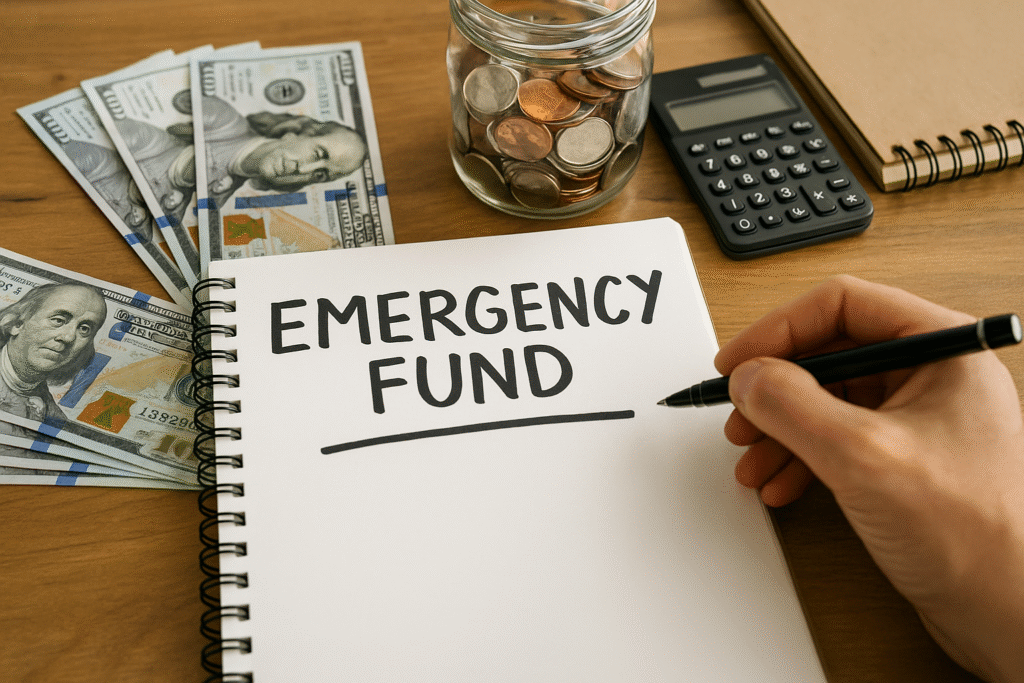Introduction
Life is unpredictable. Whether it’s a job loss, car repair, medical bill, or home emergency, having a financial cushion can be the difference between stress and stability. That’s where an emergency fund comes in—it’s your personal safety net when life throws curveballs.
In this article, you’ll learn exactly how much to save, where to keep your emergency fund, and simple strategies to build it—even if you’re starting from scratch.
What Is an Emergency Fund?
An emergency fund is money set aside specifically for unplanned expenses or financial emergencies. It’s not meant for vacations or shopping sprees—it’s for unexpected, essential costs like:
- Medical expenses
- Car or home repairs
- Job loss or reduced hours
- Family emergencies
- Pet health issues
The goal is to avoid relying on credit cards or loans when life gets messy.
How Much Should You Have Saved?
The ideal emergency fund depends on your lifestyle, income, and risk tolerance. But here are general guidelines:
Starter Goal:
- $500 to $1,000 for beginners
- Enough to cover most small emergencies
Full Emergency Fund:
- 3 to 6 months of living expenses
- Calculate your monthly essentials: rent/mortgage, food, bills, insurance, transportation, minimum debt payments
Example:
If your essentials cost $2,500/month:
- 3 months = $7,500
- 6 months = $15,000
Who Might Need More:
- Freelancers or self-employed
- Single-income households
- People with health issues or dependents
Where Should You Keep It?
Your emergency fund should be:
- Safe (not in risky investments)
- Accessible (but not too easy to dip into)
- Separate from your everyday checking account
Best options:
- High-yield savings accounts (4%–5% APY in 2025)
- Money market accounts
- Cash management accounts (like SoFi or Wealthfront)
Avoid keeping it:
- In a checking account (too tempting to spend)
- In stocks or crypto (too volatile)
- Under your mattress (not safe or earning interest)
How to Build an Emergency Fund (Even If You’re Starting From Zero)
1. Start Small, But Start Now
- Aim for $10, $20, or $50 a week
- Use a jar, separate bank account, or app like Digit
2. Treat It Like a Bill
- Automate transfers on payday
- Prioritize it in your budget (yes, even before extra debt payments)
3. Use Windfalls and Bonuses
- Tax refunds, gifts, side hustle income—all can supercharge your savings
4. Cut and Redirect
- Cancel 1–2 subscriptions and transfer that amount to your fund
- Brown bag lunch 2x/week = $80/month toward savings
5. Sell What You Don’t Need
- Declutter your home and sell unused items on Facebook Marketplace, Vinted, or eBay
When to Use Your Emergency Fund (And When Not To)
Use it for:
- Job loss
- Unexpected medical or dental bills
- Car repair that keeps you from working
- Home repairs (e.g., broken HVAC in winter)
Don’t use it for:
- Planned expenses (vacations, holidays)
- Non-essential upgrades (new phone, furniture)
- Investing or lending money
If you’re unsure—ask yourself: “If I don’t pay this, will it impact my health, housing, or income?”
How to Rebuild After You Use It
Emergencies happen. If you dip into your fund:
- Pause non-essential spending
- Re-prioritize emergency fund rebuilding
- Set a weekly transfer to gradually replenish
Celebrate that you had it in the first place—it worked exactly as intended!
FAQs About Emergency Funds
Q: Should I save or pay off debt first?
A: Do both, but prioritize a mini emergency fund of $500–$1,000 first. It prevents new debt when emergencies arise.
Q: Can I invest my emergency fund?
A: No. Emergency money needs to be stable and accessible—investments are too risky and unpredictable.
Q: Is it okay to use a credit card as a backup?
A: Only as a last resort. Credit creates more debt. Cash keeps you in control.
Final Thoughts: Peace of Mind Is Priceless
You can’t predict life—but you can prepare for it. Your emergency fund is not just a financial tool—it’s emotional protection. It reduces panic, increases your options, and brings peace of mind.
Start where you are, with what you have. One small deposit at a time. Before you know it, your future self will be saying: “I’m so glad I did this.”
